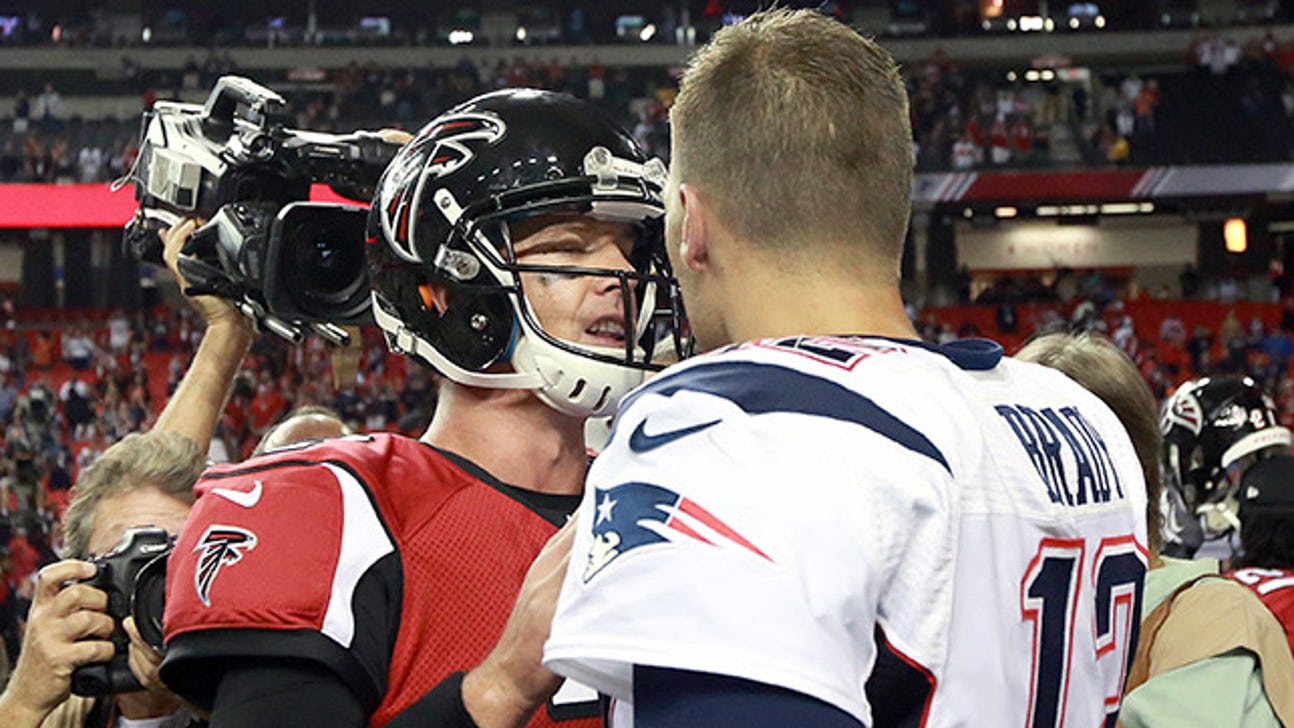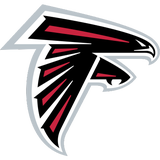
Two For Super Bowl 51: Patriots and Falcons
The postseason field is set and the two teams we’ll see in Super Bowl 51 won’t be playing on wild-card weekend. Prediction: The Patriots, the AFC’s No. 1 seed, and the Falcons, the NFC’s No. 2 seed, will battle in Houston. New England and Atlanta are the NFL’s most dangerous teams for the same reason: Each is led by the best quarterback in his respective conference, and each QB oversees his conference’s best-schemed offense.
Though their offenses are styled differently, Tom Brady and Matt Ryan approach the game similarly. The most threatening trait shared by both teams is the ability to play out of base personnel (i.e. with either two backs or two tight ends). This might seem trivial, but in this era of three-receiver packages, defenses aren’t accustomed to playing against expansive base offenses. (Both teams also excel at three-receiver sets.)
It starts at fullback. Atlanta’s Patrick DiMarco has been the NFC’s best this season (by a wide margin), and since Patriots tight end Rob Gronkowski went on injured reserve in early December, James Develin has been the AFC’s best fullback (he averaged over 30 snaps a game since Gronk’s injury). Both can create additional gaps and defined running lanes as lead blockers, and both are used as wide-split receivers out of passing sets, particularly with empty backfields. Neither is a big-time pass-catching threat out wide, but with offensive coordinators Kyle Shanahan (Atlanta) and Josh McDaniels (New England) being comfortable still aligning them there, mismatches are created for wide receivers inside.
Both offenses have a unique receiver who can augment those mismatches. For Atlanta, Julio Jones is as explosive on in-breaking routes as anyone in the NFL. For New England, Julian Edelman is as good as any receiver on out-breaking routes. And both men are terrific on crossing patterns. All of these routes emphasize the inherent advantages that come with aligning a receiver inside. Against man coverage, the inside receiver has the advantage of making the opponent defend a two-way go. Against zone coverage, it’s getting that receiver matched up against linebackers in the middle of the field.
* * *
* * *
Brady and Ryan, two first-class field generals, see to it that these advantages are fruitful. But there’s more to their success than having the football IQ to exploit favorable matchups. Brady has thrown with better precision accuracy than anyone in the league this season. Ryan, for the third year in a row, has improved as a passer on the move, both in and out of the pocket.
Movement quarterbacking is vital in Shanahan’s scheme, which is predicated on zone run action. And this is where these two offenses start to differ. The Falcons feature an outside zone ground game, with the entire O-line stretch-blocking to the perimeter and the back locating his one-cut lane. The Patriots employ more gap-scheme runs, with linemen pulling or blocking down at angles.
The end result is largely the same: both teams have a ground game that can keep drives on schedule. (The Falcons especially; their ground game has been outright dominant these last three weeks). Depth at running back has been key. Devonta Freeman and Tevin Coleman give Atlanta an unmatched one-two punch. In New England, LeGarrette Blount has been tremendous in short-yardage situations (he scored a team-record 18th rushing touchdown at Miami on Sunday) while Dion Lewis and James White present a sustainable scatback element, including between the tackles.
Lewis and White are most valuable, however, through the air. Which brings us full circle. With these two backs, who are sometimes on the field together, the Patriots have threatening runners who can also win almost anywhere as receivers. This is also true with Freeman and Coleman for Atlanta. It’s the same effect as what DiMarco and Develin bring to the passing game, only with direct firepower behind it. There’s been no bigger driver behind these teams’ success in base packages this season. Defenses simply don’t have the versatile athletes to handle these backs for four quarters. Especially when you consider that, as receivers, these guys are lining up in multifaceted formations that aid their efforts for creative route combinations.
The Patriots and the Falcons use intricate base schemes and a bounty of players who catch passes in ways that are uncommon to their listed positions. Get ready to hear more about these teams in early February.
FOR THOSE WHO DOUBT THE FALCONS…
If you take umbrage with a Falcons-Patriots Super Bowl pick, it’s most likely on the grounds of Atlanta’s defense. And that’s fair. It ranked 27th in scoring, hardly Super Bowl-caliber. But here’s the case for the unit being able to pass muster.
It’s a young and improving group, particularly on the backend. Rookie linebackers Deion Jones and De’Vondre Campbell, while still developing in Dan Quinn’s Cover 3/man-to-man scheme, have gotten better and both are capable of playing fast. In the secondary, Desmond Trufant is missed (no NFL corner was playing at a higher level at the time of Trufant’s season-ending pectoral injury in November), but unexpected slot stalwart Brian Poole (an undrafted rookie) and fourth-year pro Robert Alford have steadily ascended. Given that rookie safety Keanu Neal provides an answer against versatile tight ends (the difference-making factors in most offenses), it comes down to Trufant’s replacement, Jalen Collins. The second-year perimeter corner has been targeted often, with good and bad results. If he can be steady, it’s a solid enough group.
Or, it’s a solid enough group if the front four performs up to its potential. Defensive end Vic Beasley finished the season with an NFL-high 15.5 sacks because Quinn and coordinator Richard Smith brilliantly found ways to get him in space. When Beasley isn’t rushing upfield from a wide-nine position, he’s looping around on stunts inside. Both tactics afford him the room to maximize his lethal raw speed. Atlanta’s only other threatening pass rusher is Dwight Freeney, who, in limited doses off the bench, still has a venomous spin move and bull rush. If Beasley and Freeney are rolling, this entire defense plays fast.
Yes, we’ve covered a lot of ifs here. But they don’t necessarily all need to be recognized each week. If the Falcons’ defense can hold opponents to fewer than 30 points, this team can make it to Houston.
Question or comment? Email us at talkback@themmqb.com.










